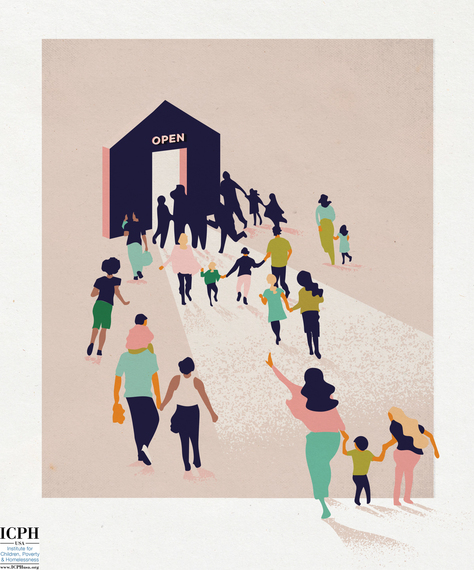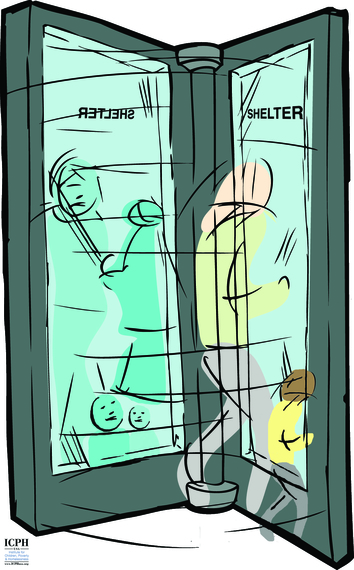Tents cities are proliferating in Seattle and Los Angeles.
Shelters are overflowing in Madison, Wisconsin, and Asheville, North Carolina.
The mayor of Portland, Oregon, has declared a housing "state of emergency."
A coalition of 10 west coast mayors is pleading for money from Washington to address what they call a "housing and homelessness crisis."
Nowhere is the situation worse than in New York City, where the shelter population this winter has surged above 60,000, at or near its all-time high--leading Mayor Bill de Blasio to order a top-to-bottom rethinking of city programs and Governor Andrew Cuomo to pledge $20 billion in state assistance.
So what explains the spike in homelessness?
The economy has been steadily growing, and unemployment falling, since 2009. Housing prices are up, but much of the country has yet to fully bounce back from the Great Recession. The usual suspects--growing income inequality, the hollowing out of the middle class, urban gentrification--are surely contributing factors, but hardly new phenomena in the United States of the 21st century.
Despite all the optimism and endorsements at all levels of government, 'rapid rehousing'--the dominant and much-touted anti-homelessness policy of the past decade--clearly has not solved the problem. But could it be making things worse?

Rapid rehousing's key component is the provision of rental vouchers. But could rent vouchers distributed in the name of ending homelessness be incentivizing people to enter the shelter system when they otherwise would not? And because those vouchers come with time limits and little or no support, are we essentially setting families up to fail?
Pioneered in the 2000s and embraced by the Obama administration, rapid rehousing emphasizes moving homeless families out of shelters and into permanent homes as quickly as possible. It operates on the assumption that the driving force behind homelessness is a lack of affordable housing, and responds by directly helping people pay their rent.
It also promises to save money, at least in the short term, because rent subsidies cost less per month than putting people up in shelters. And in response, the funding for shelters is being reduced and many facilities are being closed down.
For a portion of the homeless population--who are otherwise self-supporting, but have experienced a temporary setback, such as an illness, lost job, or house fire--rapid rehousing can work wonderfully. Short-term help finding a place to live and paying the rent is exactly what they need to get back on their feet.
But this one-size-fits-all policy does not provide the motivation or resources to address the underlying reasons that bring families to the shelter's front door. As such, rapid rehousing's quick ushering to the exit door has often resulted in the eventual return to shelter.

Why?
For many, becoming homeless is a symptom of cumulative instability in their lives. They may lack basic education, job skills, or employment experience. They may struggle with chronic disease, mental disorders, or substance abuse. They may be victims of domestic violence. Many grew up poor and were ill-served as children by the public schools and the foster care system.
These are some of the most vulnerable people in society. To have a chance at self-sufficiency, they need remedial education, employment training, medical treatment, drug and alcohol rehab--the kind of services that can and should be delivered in medium-term residential facilities.
Simply moving such men, women, and children into apartments with time-limited rent subsidies and vouchers and little to no support does not change why they became homeless in the first place--and may actually be counterproductive in the long term.
New York City's experience is instructive. From 2005 to 2011, under the Bloomberg administration, rapid rehousing was the heart of the city's anti-homelessness efforts. Over those six years, the city used rent subsidies to move 33,000 people out of shelters.
But recidivism--or the rate at which families placed in apartments bounced back to the shelter system--almost doubled, from 26% in 2005 to 49% in 2011. This is strong evidence that families were being moved into housing before they were ready.
Meanwhile, instead of going down, the shelter census actually increased--in part, and most importantly, because families who had been living doubled up with relatives or in substandard apartments saw what they believed was an opportunity to improve their housing by entering the shelter system to secure their place in line.
Even after rental subsidies ended in 2011, the number of families applying for and entering shelter, continued going up. In all likelihood, many expected a new rehousing program to appear. Meanwhile, the recidivism rate kept climbing as families' previously issued subsidies ran out.
Another caution light comes from an interim national study published last July by the U.S. Department of Housing and Urban Development. After closely following 2,300 homeless families in 12 communities, the authors found that those tracked into rapid rehousing left shelter sooner and cost less in the short term. But after 20 months, almost 40% of that group was either doubled up or homeless again, and most of the financial savings had disappeared--statistics unlikely to improve when the full 36-month study is finished.
Despite these warning signs--and the burgeoning crisis in the streets of cities from coast to coast--rapid rehousing remains the dominant homelessness solution of the day. It guides government funding decisions, program design, and the actions of front-line workers on a daily basis. Most importantly, it is affecting the lives of countless needy families--for better or for worse.
Rapid rehousing advocates argue the math is simple: move families into housing with rental subsidies and the number of homeless families goes down and with it the need for expensive shelters. But the real math is a lot more complicated than this. Moving families out of shelter is no guarantee that they won't be coming back or that new families already on the edge won't be drawn in by the promise of help to pay the rent. As a result, the promise of saving money becomes quite expensive.
In the end, the real costs of rapid rehousing are human. Are we pushing vulnerable people, including children, out of shelters before they're equipped to survive on their own? Are we compounding the situation by encouraging people living doubled or tripled up or in substandard housing to think of applying for shelter as the first step to getting a better apartment? Are we laying the groundwork for an even larger homeless crisis, by closing down shelters and transitional housing units at a critical time of surging need? Have we forgotten that our mission is not simply to take people off the street, but to put them on their feet?
With family homelessness up 60% in Washington, DC, 19% in San Antonio, Texas, 14.3% in Baltimore, Maryland, 10% in Cleveland, Ohio, and 10% in McKinney, Texas, among others, and with 50% of Conference of Mayors survey respondents expecting their numbers to increase in the next year, these questions must be answered.
As rapid rehousing is likely to remain the primary tool for combating the family homelessness crisis, the mayors and governors who have linked their legacies to this policy must be made aware not only of its promises, but of its potential shortfalls. In short, rapid rehousing has not proven to be a reliable exit door policy for reducing family homelessness, but it has also become a de facto revolving door policy for those whose issues remain unaddressed, and an inviting front door policy for those in need.
Obviously, the federally prescribed rapid rehousing approach is not the be all and end all it was promised to be. But in the end, those responsible for maintaining the people's trust and the public's coffers must ask whether it is a question of understanding the prescription's side effects or has the problem been misdiagnosed.
